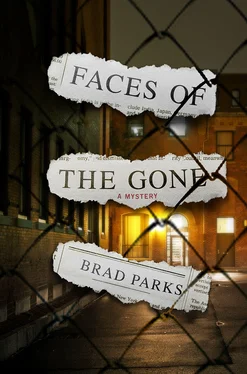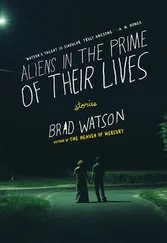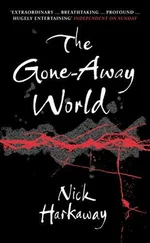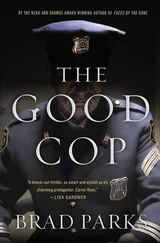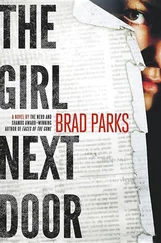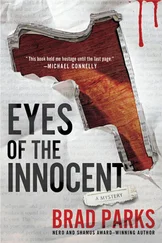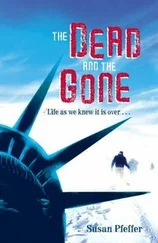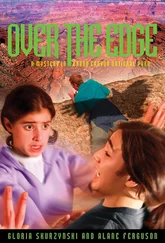Brad Parks - Faces of the Gone
Здесь есть возможность читать онлайн «Brad Parks - Faces of the Gone» весь текст электронной книги совершенно бесплатно (целиком полную версию без сокращений). В некоторых случаях можно слушать аудио, скачать через торрент в формате fb2 и присутствует краткое содержание. Год выпуска: 2010, ISBN: 2010, Издательство: Minotaur Books, Жанр: Триллер, на английском языке. Описание произведения, (предисловие) а так же отзывы посетителей доступны на портале библиотеки ЛибКат.
- Название:Faces of the Gone
- Автор:
- Издательство:Minotaur Books
- Жанр:
- Год:2010
- ISBN:9780312574772
- Рейтинг книги:3 / 5. Голосов: 1
-
Избранное:Добавить в избранное
- Отзывы:
-
Ваша оценка:
- 60
- 1
- 2
- 3
- 4
- 5
Faces of the Gone: краткое содержание, описание и аннотация
Предлагаем к чтению аннотацию, описание, краткое содержание или предисловие (зависит от того, что написал сам автор книги «Faces of the Gone»). Если вы не нашли необходимую информацию о книге — напишите в комментариях, мы постараемся отыскать её.
Faces of the Gone — читать онлайн бесплатно полную книгу (весь текст) целиком
Ниже представлен текст книги, разбитый по страницам. Система сохранения места последней прочитанной страницы, позволяет с удобством читать онлайн бесплатно книгу «Faces of the Gone», без необходимости каждый раз заново искать на чём Вы остановились. Поставьте закладку, и сможете в любой момент перейти на страницу, на которой закончили чтение.
Интервал:
Закладка:
“Yeah, I thought about that,” Peterson said. “Look, I don’t know. But I got a story to write. Thompson says we can get this thing in second edition if I hurry.”
“No byline, remember?”
“Believe me, I remember. I don’t want anyone blowing up my house.”
The call ended just as I made the turn onto Ludlow Street. A few blocks down, I was stopped not by the police but by the size of the crowd that had gathered. A homicide provides this weird kind of live theater for people who grow accustomed to living around it. Once word gets out someone has gotten shot, it’s not unusual to get a decent-sized collection of gawkers, gossips, and busybodies trying to sneak a glance at the victim to see if it’s someone they know.
Plus, once all the flashing lights start whirring and the cops blanket the scene, there’s no safer place in the city.
You have to be careful what questions you pose to bystanders at a crime scene, because the power of suggestion can be strong.
For example, I would never ask, “Did anyone see a white van driving off?” Because maybe the first person you talked to wouldn’t have seen the van, nor the second. But eventually word gets around the Bird Man is asking about a white van and, lo and behold, someone who wants to get a little attention will say they’ve seen it.
So as I waded through the throng, I tried to stick to non-leading questions-simple stuff like if anyone knew who the victim was or had any ideas about what had gone down.
Over the next five or ten minutes, as I worked my way closer to the crime scene, I heard the usual assortment of theories. Half the people were absolutely certain it had something to do with the earlier Ludlow Street murders. An equal number were just as convinced it was unrelated. The shooter was believed to be a local drug dealer named Antoine, a rogue Newark cop who went by the street name “Radar,” or a jealous boyfriend who found another guy making time with his girl.
The shooting was everything from five shots (the supposedly correct version), to one shot (always popular), to a massive gun battle that nearly clipped an innocent bystander (according to the man who claimed to be the innocent victim and wanted my opinion as to whether he could sue someone and recoup damages on account of the trauma he suffered).
But no one had much of an idea who the victim was. That was a constant.
Finally-after receiving enough double takes from people who couldn’t believe a white guy was in their neighborhood at such a late hour-I made it to where the yellow police tape separated the civilians from the professionals.
The cops had put up some portable lights, allowing me to see into the back of the vacant lot. Sure enough, the body appeared to be exactly where I had seen the bloodstains earlier in the week. The corpse was covered with a white sheet, with only the sneaker-clad feet sticking out. I was beginning to think we were just going to have to wait on the police for an ID.
And then I saw it, lying no more than three feet from the body: a backpack adorned with soda can tabs. Rashan Reeves’s backpack.
I dropped to one knee. It was either take a knee or topple over. A few hours earlier, Rashan Reeves had been riding in my car, asking me about what it was like to be a newspaper reporter, alive and inquisitive, possibly beginning to consider a world with alternatives beyond pushing drugs. And now he was just one more dead drug dealer, his life-and whatever potential he had-oozing out of him onto the dried weeds in some frozen vacant lot.
I felt like crying. And screaming. And ripping out every damn last one of those weeds so that maybe, come springtime, I could plant flowers there instead.
But none of that was going to do any good. So I just did my job. I pulled out my cell phone and called Peterson, informing him the victim was Rashan Reeves of Newark.
“How do you know?” Peterson barked.
“Because I interviewed him earlier this evening. He copped to being a drug dealer in the network that sold ‘The Stuff.’ He even told me how he got recruited.”
“Uh-huh,” Peterson said, and I knew he was writing as fast as he could.
“Here, let me just dictate. You ready?”
“Shoot.”
The words came racing out of me.
“Another dealer connected to the brand of heroin known as ‘The Stuff’ was killed in Newark late last night,” I began.
“Rashan Reeves, twenty-two, appears to be the fifth victim in a lengthening chain of violence that continues to unsettle New Jersey’s largest city. His body was discovered in the same Ludlow Street vacant lot where four of his fellow dealers were found dead earlier this week.
“Newark police have not yet confirmed that this most recent victim is Reeves, identifying him only as a young black man who was shot five times in the head. Police also would not speculate whether the two Ludlow Street crimes were connected.
“But shortly before his death, Reeves told an Eagle-Examiner reporter he had been dealing ‘The Stuff’ for four months, ever since his release from East Jersey State Prison.
“Reeves was carrying four gruesome postmortem photographs of the Ludlow Street victims and a memo penned by a person who claimed to have killed them. In the memo, the killer-identified only as ‘the Director’-writes that he eliminated the four dealers as punishment for selling a weakened version of ‘The Stuff’ to their customers.
“Reeves was killed less than three hours after the interview ended, possibly in retribution for having spoken to a reporter.”
“Slow down, slow down,” Peterson said. “This is great. Are you sure it’s all true?”
“Never been more sure,” I said, then helped Peterson with the details and background he needed to finish off the story.
“Tell Tina to stick this on A1 next to the story about the fires,” I said.
“Oh, and Peterson?” I added. “Screw the new policy. Put my byline on it. I want this guy to know I’m coming for him.”
The Director had little trouble deciding what approach to take with Rashan Reeves. It was partly based on the psychological profile in Reeves’s Department of Corrections dossier, which Alvarez had been nice enough to provide. But it was also based on the Director’s instincts on where Reeves could be most easily exploited.
Greed. It was Reeves’s weakness. It was many people’s weakness.
The Director made the phone call himself, telling the young dealer he was aware of the visit he had just made to Hector Alvarez’s house with the Eagle-Examiner reporter. The Director did not hide his disappointment and told Reeves he had considered terminating their contract. But, the Director explained, that would scarcely solve the publicity problem if the reporter were to publish Reeves’s story.
So the Director made Reeves an offer he was sure the reporter could not match: in exchange for retracting his story and ending all contact with the reporter, Reeves would be given a leased Lexus. He would be allowed to use the car as long as he continued his loyal service. Did that sound fair? the Director asked.
Reeves had practically jumped out of his skin to accept. Sure he wanted a new Lexus. Didn’t everyone?
Having thrown out the bait and set the hook, the Director needed only reel in his catch. It was easy enough. The Director told Reeves that, since he was to be the primary driver of the new Lexus, he would need to be a cosigner on the lease. Could he meet with the Director at eight o’clock with his blindfold on, like it was their normal weekly product delivery?
Of course he could. The young man was remarkably guileless. Reeves had asked only one question: “What kind of Lexus will it be?”
Читать дальшеИнтервал:
Закладка:
Похожие книги на «Faces of the Gone»
Представляем Вашему вниманию похожие книги на «Faces of the Gone» списком для выбора. Мы отобрали схожую по названию и смыслу литературу в надежде предоставить читателям больше вариантов отыскать новые, интересные, ещё непрочитанные произведения.
Обсуждение, отзывы о книге «Faces of the Gone» и просто собственные мнения читателей. Оставьте ваши комментарии, напишите, что Вы думаете о произведении, его смысле или главных героях. Укажите что конкретно понравилось, а что нет, и почему Вы так считаете.
